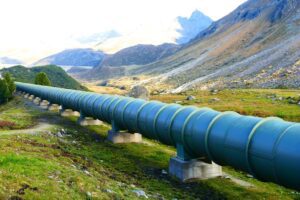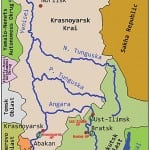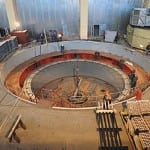The catastrophe at the 6,400-MW Sayano-Shushenskaya hydroelectric plant that killed 75 workers in southern Siberia on Aug. 17 had a number of contributing causes, including design, operation, and repair drawbacks, an investigative report released last week by the Russian industrial safety regulator Rostekhnadzor said. But the agency also pointed fingers at six high-ranking officials, saying that the accident resulted from their “negligence, laxity, and a lack of engineering thinking.”
Officials accused by the 100-page Russian report included former electricity monopoly chief Anatoly Chubais—a primary persona during Russia’s 1990 privatization drive under Boris Yeltsin, according to Agence France Presse. Others included Igor Yusufov, Russia’s energy minister until 2004, and Viyacheslav Sinugin, a current deputy energy minister.
Chubais, who served as the head of the state-owned power monopoly Unified Energy System (UES) from 1998 to 2008, led the effort to break it up through privatization and spinning off its electricity production assets into separate companies. He remains widely unpopular in Russia for economic policies thought to have lead to the rise of the oligarchs.
Privatization policies would have also gone against the grain of the government under Russian Prime Minister Vladmir Putin, who served as the federation’s president from 2004 through 2008. Under Putin, the Kremlin’s ownership of big business had more than doubled. The country only recently revived privatization as it faces its first budget deficit in a decade.
Rostekhnadzor head Nikolai Kutyin said at a press conference last week that the plant’s second turbine had been at the center of the disaster and had been put into operation in 2000 despite technical deficiencies. Chubais had signed off on the start of its operation without evaluating the security of the situation, the report said.
The report also accused the heads of the hydropower plant and its owner, RusHydro, a partly government-owned entity, and the largest body to have spun off UES when it was privatized in July 2008. It said that the company failed to take efforts to prevent the disaster. Kutyin told reporters that the accusations revolved around poor maintenance, which had caused the second turbine to vibrate excessively and then explode when it was forced to generate more power in order to make up for a shortfall caused by a fire at a separate power plant. Also, the staff at the plant had not been trained for the disaster scenario, he said.
Officials at Rostekhnadzor are continuing to assess design drawbacks and the performance of the equipment installed at the plant, a task that would require a few more months, according to news agency ITAR-TAAS.
The report said that the disaster is expected to cost 7.338 billion rubles ($244 million), including wreckage to major power generating assets and environmental damage.
The 100-page document was released two weeks after Putin ordered a thorough investigation of the accident. “The investigation must be conducted thoroughly and objectively,” he told the meeting at the Emergencies Ministry’s crisis management centre. At the meeting, he also proposed installation of monitoring systems similar to black boxes used on planes.
On Aug. 17, 75 workers lost their lives following an explosion at the giant, 10-turbine hydropower station. Describing the damage, plant owner RusHydro had then said, “hydro-turbines 2, 7 and 9 had been destroyed, turbines 1 and 3 seriously damaged and hydro-turbines 4 and 5 slightly damaged, that the metal structures of the roof of the turbine room has collapsed, that hydro-turbines 8 and 10 were damaged internally and that turbine 6 was in a satisfactory state. Transformers 1 and 2 had been destroyed, while transformers 3, 4 and 5 were in a satisfactory condition.”
Bigpicture.in earlier last month published several photographs showing the extent of the devastation.
The plant in the Khakassia was a landmark project when it was completed in 1978. It straddles Siberia’s Yenisei River and features a 245-meter-high concrete dam that holds a water reservoir stretching over 621 square kilometers, says RusHydro’s website. However, though the station is said to be capable of producing three times as much power as the Hoover Dam, its turbines have not been overhauled since Soviet times.
RusHydro was set up in December 2004—when the country was reforming its electric power industry—to ensure reliable and safe operation of 15 federal hydropower plants, among them, the giant Sayano-Shushenskaya plant. Hydropower development in Russia had virtually stagnated in the 1990s, and existing plants were—and continue to be—in bad shape, RusHydro says on its website.
“The equipment of most Russian hydro-plants is over 40% obsolete and for some [hydropower plants], this figures reaches 70%, this being connected with the system-wide problem of the entire hydropower industry of the last fifteen years—chronic underfinancing,” it says.
Sources: AFP, ITAR-TAAS, Bigpicuter.in, Russiaprofile.org, Reuters, The Wall Street Journal, POWERnews










